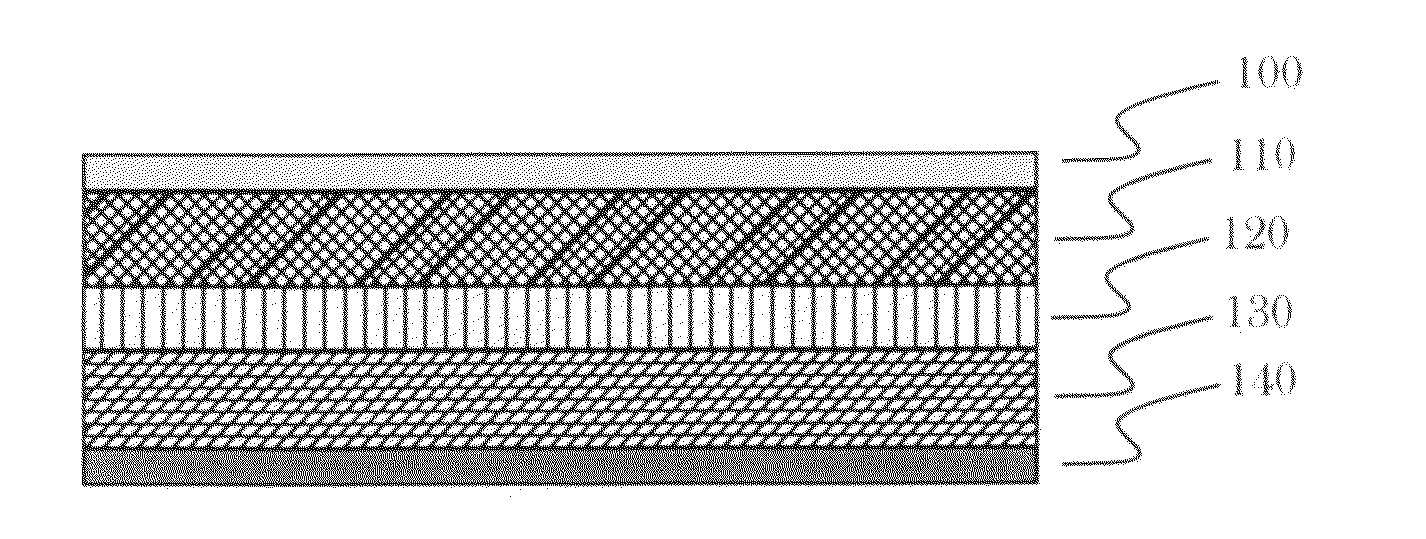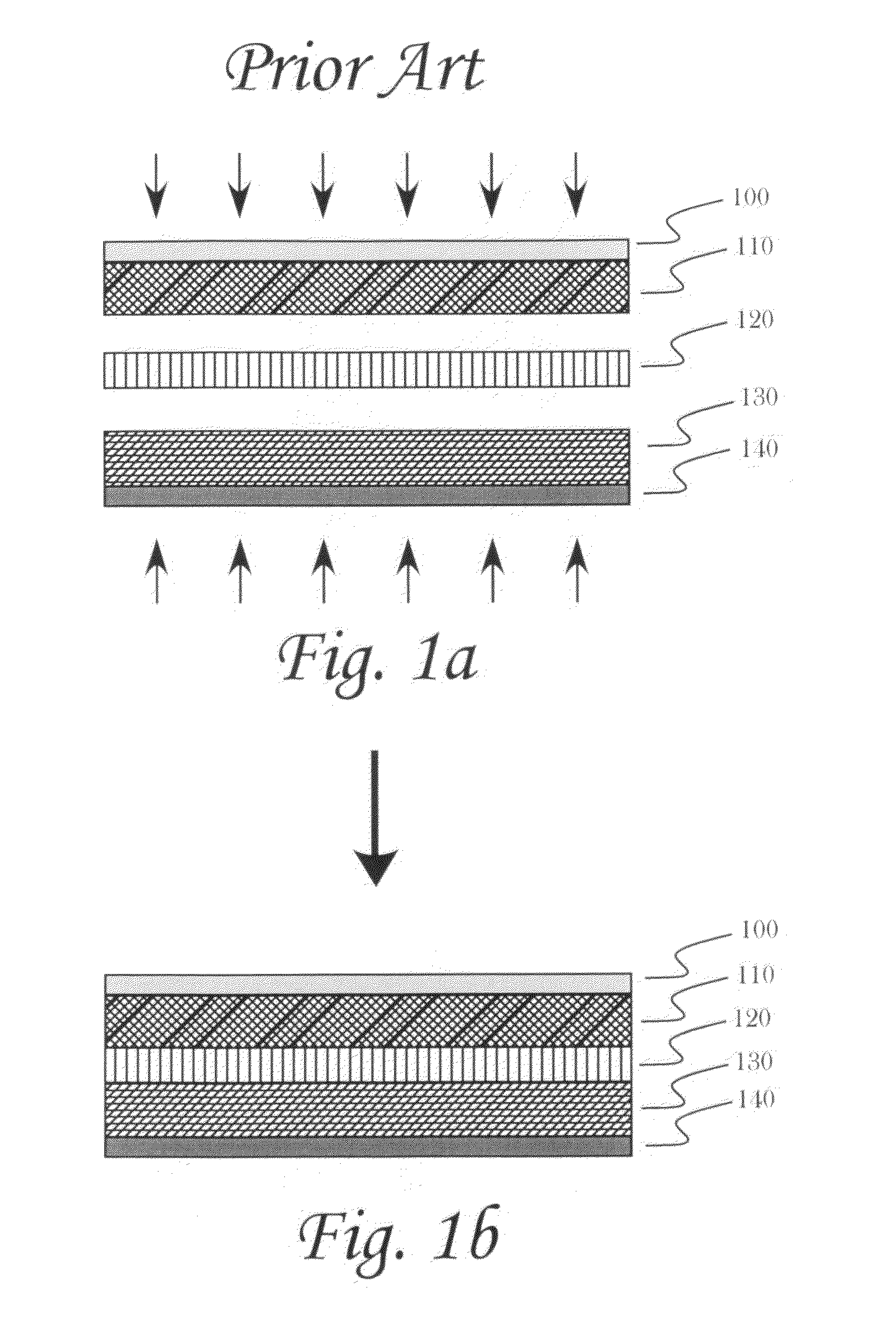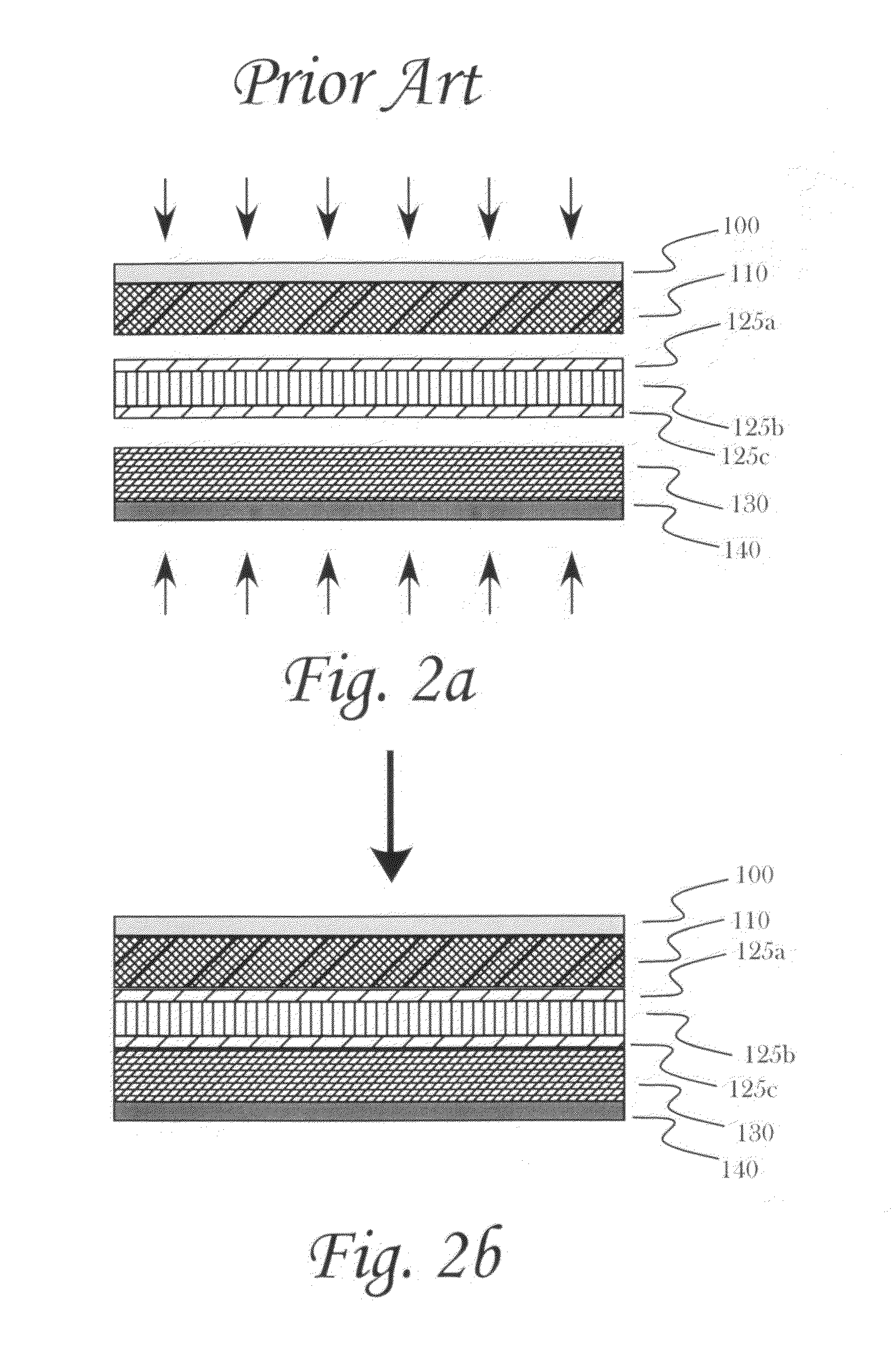Polymer supported electrodes
- Summary
- Abstract
- Description
- Claims
- Application Information
AI Technical Summary
Benefits of technology
Problems solved by technology
Method used
Image
Examples
example 1
Preparation of Support
[0067]The surfaces of two 25 mm by 75 mm porous polyethylene battery separator membranes were exposed to plasma for 10 minutes. A poly-(hydroxymethyl methacrylate) (pHEMA) coating was then applied to the treated separator membrane. Monomeric HEMA was mixed with water at a 5% v / v ratio to which the catalyst FeCl2 was added to yield a final FeCl2 solution molarity of 2.5×10−4. The treated separator membrane was promptly immersed into the HEMA solution for 3 hours, removed from the solution, rinsed with water, rinsed in ethanol, and allowed to air dry.
example 2
Separator Membrane Mounting
[0068]The plasma treated membrane was placed upon an aluminum foil sheet covering one side of a 25 mm by 75 mm standard microscope slide to form a membrane / foil / glass slide sandwich and was held together with small binder clips to form a membrane-electrode sandwich.
example 3
Preparing Stock Nanotube Solution
[0069]Multi-walled carbon nanotubes (MWCNTs) were readied by suspending 2400 mg of MWCNT in 160 ml of 15.6M H2(NO3) and refluxed for 10 hours using an oil bath at 125° C. and collected and dried by filtration. The average length and diameter of the MWCNTs ranged from 5 to 50 μm and 2-25 nm, respectively. After drying, 60 mg of the acid treated MWCNTs was suspended in 20 ml of 200 proof ethanol in a beaker placed for 45 minutes placed in a 70 watt ultrasonic cleaning water bath operating at 40 kHz to yield a stock MWCNT solution.
PUM
 Login to View More
Login to View More Abstract
Description
Claims
Application Information
 Login to View More
Login to View More - R&D
- Intellectual Property
- Life Sciences
- Materials
- Tech Scout
- Unparalleled Data Quality
- Higher Quality Content
- 60% Fewer Hallucinations
Browse by: Latest US Patents, China's latest patents, Technical Efficacy Thesaurus, Application Domain, Technology Topic, Popular Technical Reports.
© 2025 PatSnap. All rights reserved.Legal|Privacy policy|Modern Slavery Act Transparency Statement|Sitemap|About US| Contact US: help@patsnap.com



